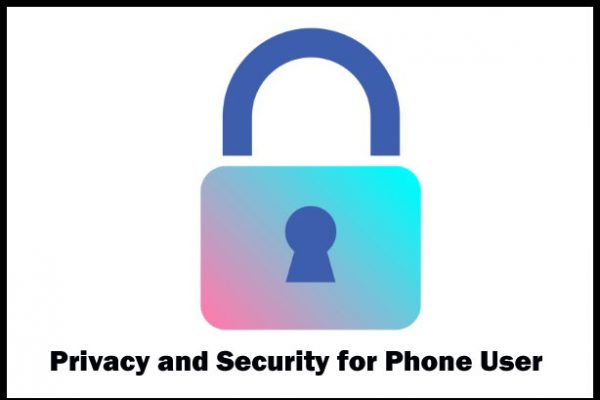Privacy and Security for Phone User
Privacy and security are important concepts that relate to the protection of personal information and data.
Privacy refers to the right to keep personal information and data confidential and secure, while security refers to the measures that are put in place to protect this information and data from unauthorized access or misuse.
For phone users, privacy and security are particularly important because phones are often used to store and access a wide range of personal and sensitive information, such as contacts, emails, texts, photos, and financial data.
If this information is not properly protected, it can be accessed by unauthorized individuals or organizations, which can lead to a variety of negative consequences, such as identity theft, financial fraud, or online harassment.
Common Phone Privacy and Security Threats
Phone users may face a variety of privacy and security threats, including:
1.) Phone Hacking
Phone hacking refers to the unauthorized access to a phone’s data or system.
Hackers may use a variety of techniques to gain access to a phone, such as installing malware, sending phishing emails, or exploiting vulnerabilities in the phone’s operating system.
Once they have gained access, they may be able to access personal and sensitive information, such as contacts, emails, texts, and financial data.
2.) Unauthorized Access to Personal Data
Phone users may also face the risk of unauthorized access to their personal data by third parties, such as phone service providers or app developers.
These parties may access personal data without the user’s knowledge or consent, and may use this data for their own purposes, such as for marketing or research.
3.) Phone Viruses
Phone viruses are malicious software programs that can infect a phone and cause it to malfunction or transmit personal data to third parties.
Phone viruses may be spread through downloading infected apps, visiting infected websites, or connecting to infected networks.
Steps to Protect Phone Privacy and Security
To protect their phone privacy and security, phone users can take the following steps:
1.) Use Strong Passwords
Using strong passwords that are difficult to guess can help prevent unauthorized access to your phone and to your personal information.
It is also a good idea to use different passwords for different accounts and to change your passwords regularly.
2.) Enable Two-Factor Authentication
Two-factor authentication requires users to provide two forms of identification in order to access an account or device.
This can include a password and a code that is sent to a separate device, such as a phone or email.
Enabling two-factor authentication can help protect against unauthorized access to your phone and accounts.
3.) Use a Virtual Private Network (VPN)
A VPN is a secure network connection that allows users to transmit data over a public network without the risk of being intercepted.
When using a public WiFi network, such as at a coffee shop or airport, phone users can use a VPN to protect their data and prevent others from accessing it.
4.) Be Cautious About Downloading Apps and Sharing Personal Information Online
Phone users should be cautious about downloading apps from untrusted sources and about sharing personal information online, such as through social media or through unsecured websites.
It is also a good idea to read the privacy policies of apps and websites before using them to understand how your personal information may be used.
5.) Keep your Phone’s Operating System up to Date
Phone manufacturers regularly release updates to fix vulnerabilities and improve security.
By keeping your phone’s operating system up to date, you can help protect yourself against new threats and vulnerabilities.
6.) Use a Screen Lock
A screen lock is a security measure that requires users to enter a passcode or use biometric authentication (such as a fingerprint or face scan) in order to access their phone.
Enabling a screen lock can help prevent unauthorized access to your phone and to your personal information.
7.) Set Up a Passcode or Biometric Authentication
In addition to enabling a screen lock, phone users can also set up a passcode or use biometric authentication to secure their phone.
A passcode is a series of numbers that must be entered in order to access the phone, while biometric authentication uses physical characteristics (such as a fingerprint or face scan) to unlock the phone.
8.) Use Encryption
Encryption is a process that scrambles data in such a way that it can only be accessed with a special key or password.
By using encryption on your phone, you can help protect your personal information from being accessed by unauthorized individuals.
Conclusion
Phone privacy and security are important for protecting personal information and data from unauthorized access or misuse.
Phone users may face a variety of privacy and security threats, including phone hacking, unauthorized access to personal data, and phone viruses.
To protect their phone privacy and security, phone users can take steps such as using strong passwords, enabling two-factor authentication, using a virtual private network (VPN), and being cautious about downloading apps and sharing personal information online.

I am a dedicated tech journalist who spends my time extensively researching the latest tech trends, with a particular focus on mobile phone technology. My passion lies in delving deep into the ever-evolving world of smartphones, uncovering cutting-edge features, advancements, and industry developments. Read more about me here, or get in touch in Twitter.

